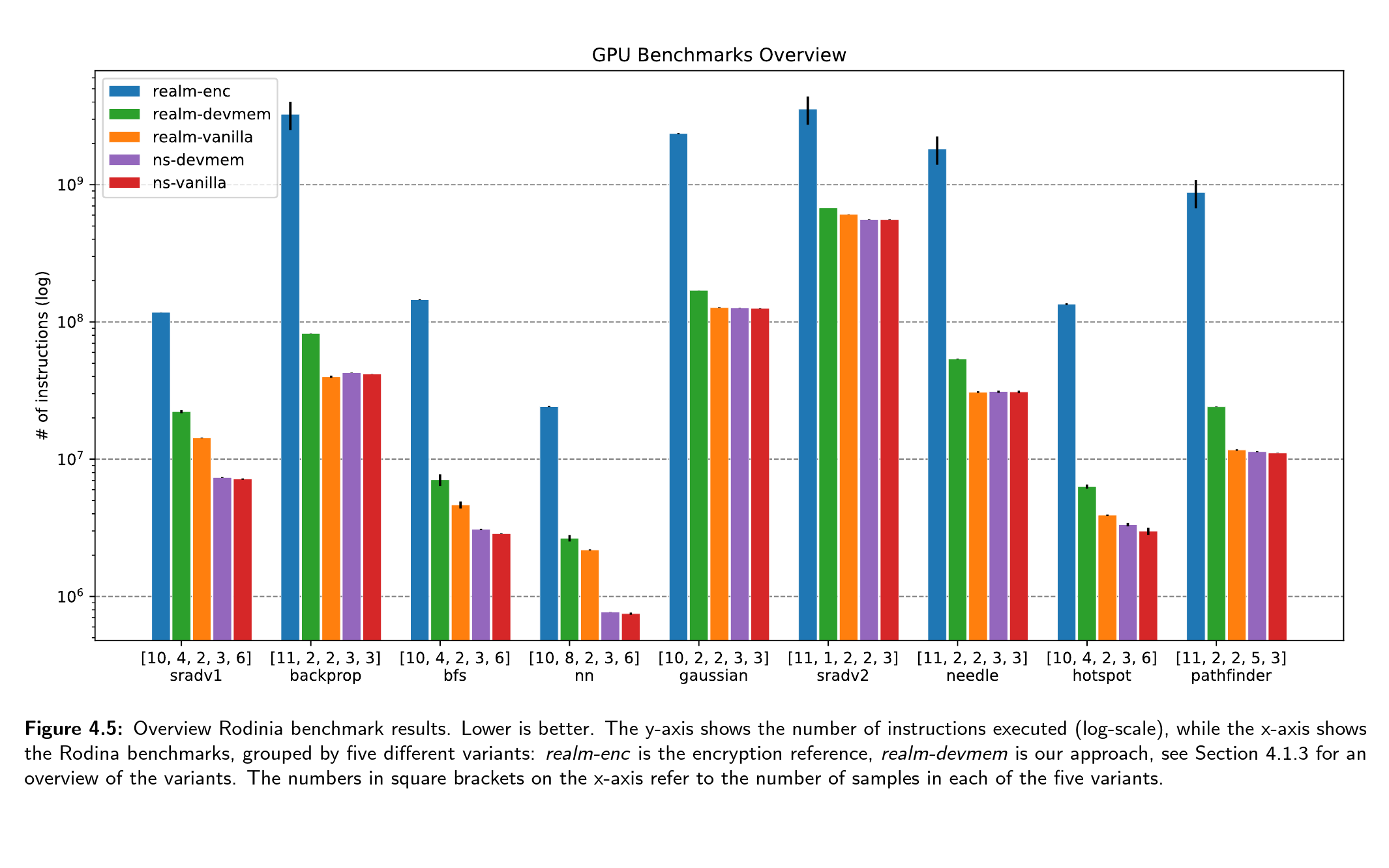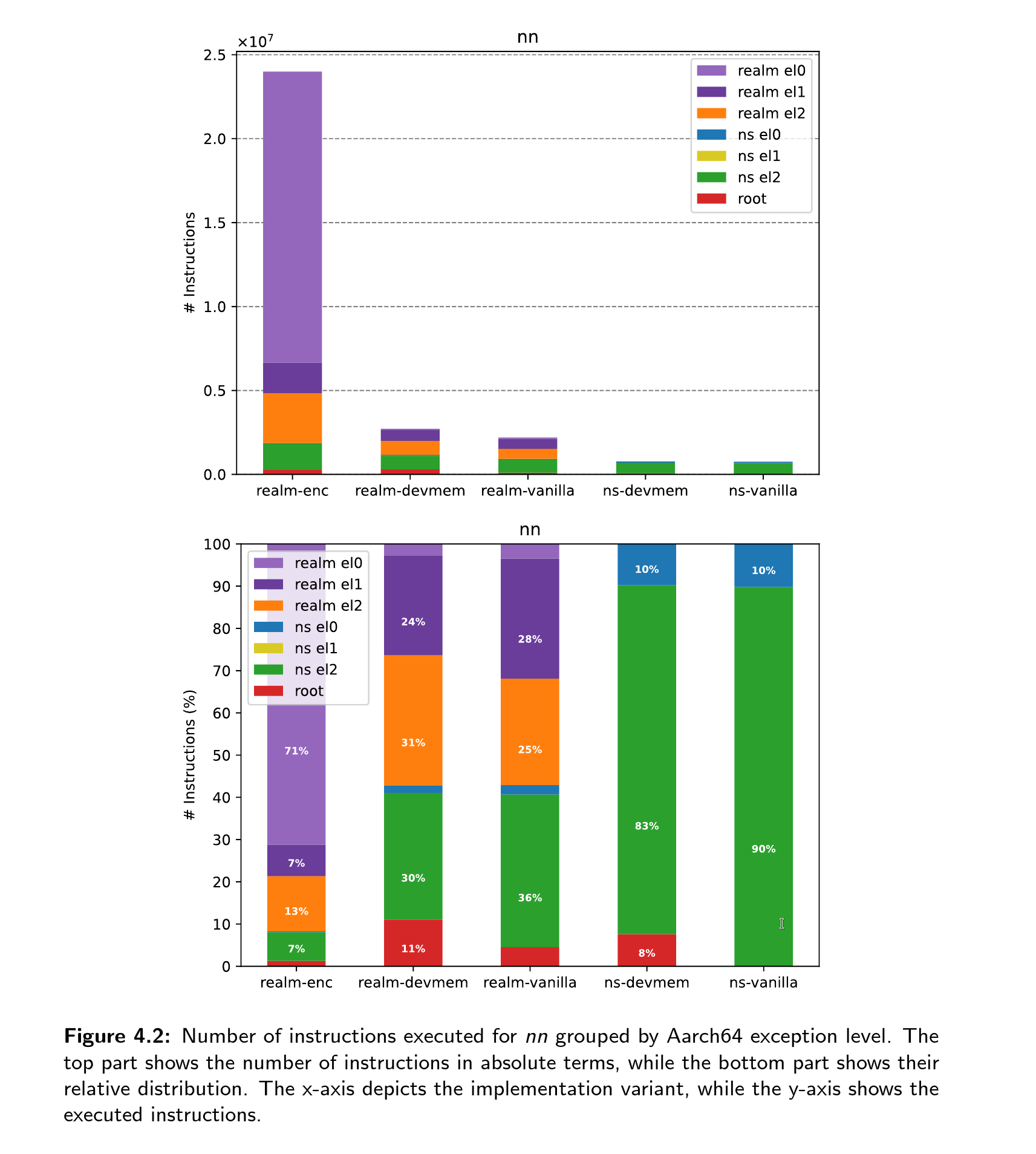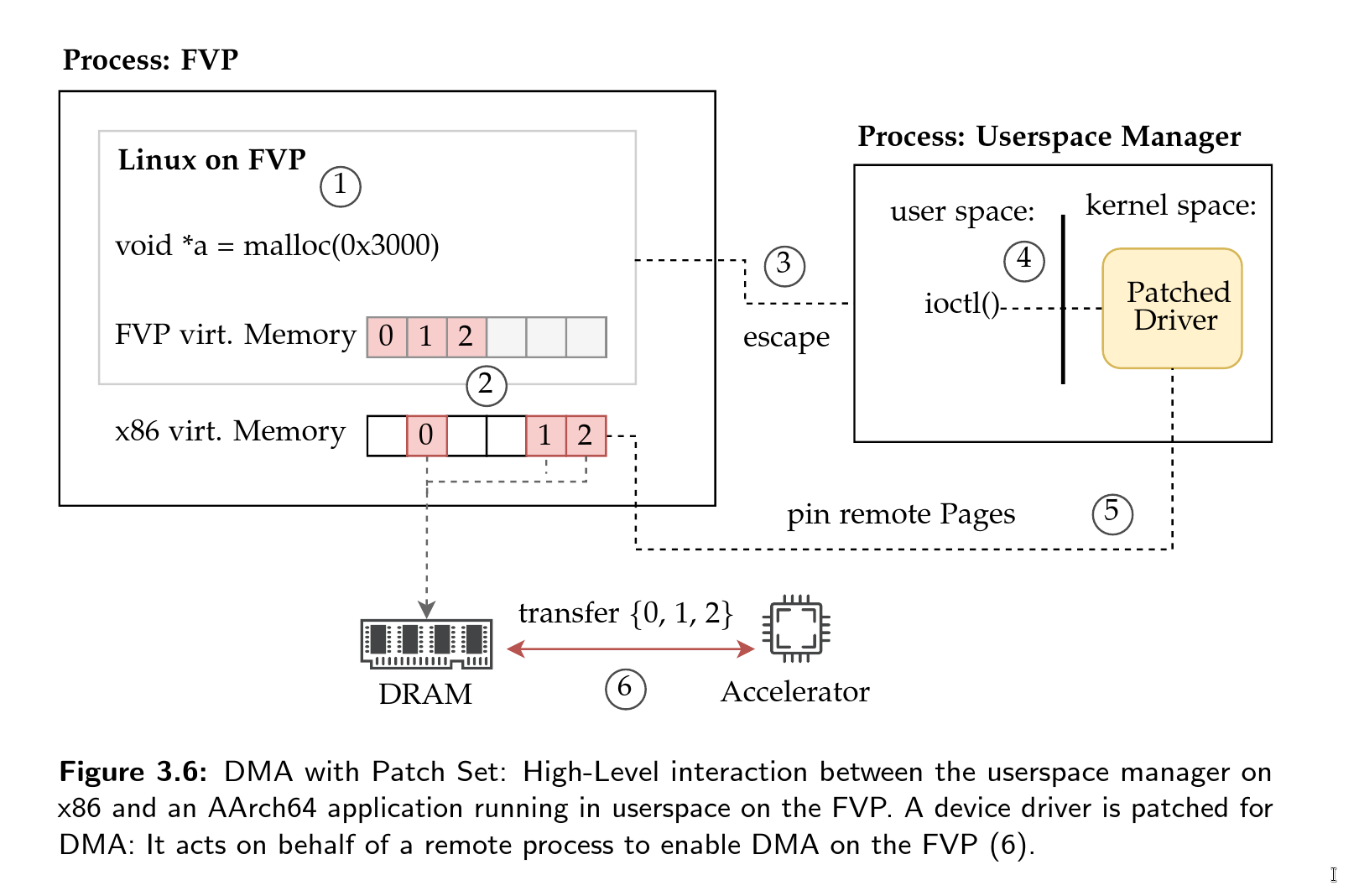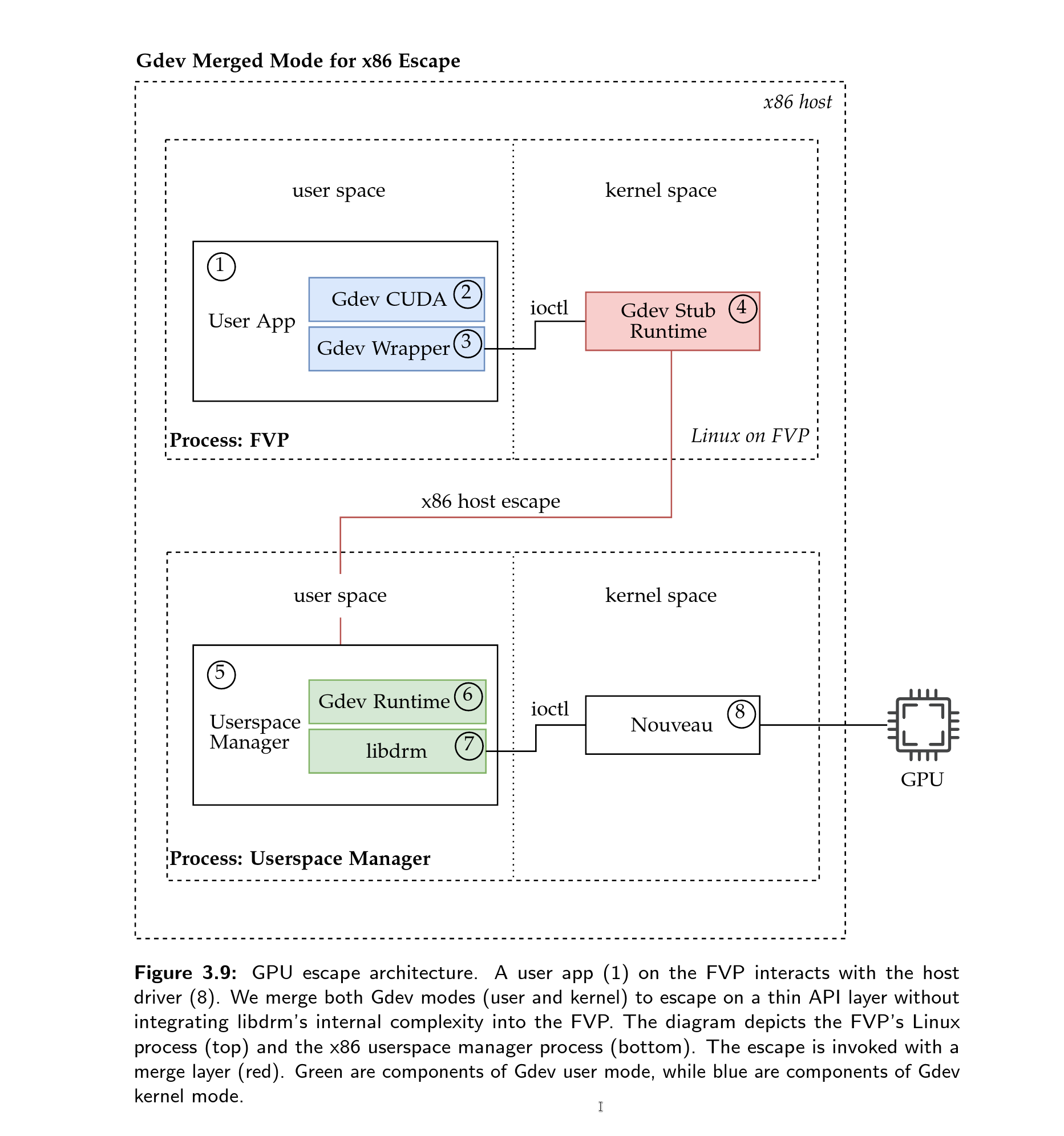Protecting Accelerator Execution with Arm CCA
In this blog post, I highlight the results of a research project I collaborated on as part of my graduate studies at ETH Zurich. It is based on Arm’s Confidential Compute Architecture, a new set of hardware and software primitives in upcoming Armv9-based CPUs. Confidential Computing is an emerging field in cloud computing that aims to protect sensitive information from potential threats. This is accomplished with a set of firmware and hardware features in the CPU and aims to shield user data and code from unauthorized access, for instance by a malicious system administrator or a malevolent hypervisor. An interesting open research problem is how we can employ a trusted execution environment across the boundary of the CPU to include external devices. In cloud settings, powerful CPU cores are increasingly linked with specialized PCIe-based accelerators such as graphic cards, showing that there is an interest to confidentially interact with external devices.

Abstract
Confidential Computing is an emerging field in cloud computing that aims to protect sensitive information from potential threats. Hardware-based trusted execution environments shield user data and code from unauthorized access by a malicious tenant on the system. While current implementations focus on process-level abstraction, there has been a trend toward isolating confidential information at the virtual machine level. However, integrating confidential devices often requires specialized hardware or encryption, leading to increased computation overhead and compatibility issues. Arm confidential computing architecture (Arm CCA) enables trusted execution environments on the new generation of Armv9-A processors. It uses a specific set of design choices to enable powerful VM-based isolated execution. However, it lacks support for powerful accelerators connected via PCIe. We propose a system to make confidential PCIe-based accelerators compatible with Arm CCA without requiring hardware changes or encryption. We implement our approach on the Arm Fixed Virtual Platform simulation software, using an escape mechanism to communicate with connected devices. Through evaluation with FPGA and GPU accelerators, we demonstrate that our method incurs lower overhead than encryption-based approaches. Although based on simulations, this work provides insights into the potential benefits of integrating confidential PCIe-based accelerators into Arm CCA.

Technical Report, Plots and Figures
You may download the technical report here, I am planning to open source the artifacts later on.
Thesis: Protecting Accelerator Execution with Arm Confidential Computing
Lack of Real Hardware. Arm’s Confidential Computing architecture is still actively developed and the new generation of Armv9-based CPUs are not available yet in silicon. To address this issue, Arm provides a simulation software called Fixed Virtual Platform (FVP). It is proprietary software and simulates complete Arm-based systems from CPUs to microarchitectural behavior. However, the simulation does not provide a functional interface to connect to PCIe devices and hence can not interact with accelerators such as GPUs and FPGAs, which is instrumental to demonstrate and evaluate confidential interactions with external devices.
Challenges and Outlook. One of my primary efforts in this collaboration have been to bridge the gap between simulating non-existing hardware and interaction with functional real world accelerators. This required to build a trap-and-emulate style escape mechanism out of the simulated Arm system and allowed us to experiment with Arm CCA and accelerators even though hardware implementations are unavailable in silicon yet.
With this thesis, I am also finishing my graduate program in Computer Science at ETH Zurich and starting a position as a Scientific Engineer at the Secure and Trustworthy Systems Group at ETH Zurich. I’m eagerly anticipating this opportunity and looking forward to delving deeper into the realm of trusted computing through further research.
Happy hacking and thanks for reading.
– bean
Update: 29. September 2023: I am thrilled to announce that our work on Protecting Accelerator Execution with Arm Confidential Computing Architecture will be included in the program of USENIX Security 2024.
https://arxiv.org/abs/2305.15986
Update: 27. October 2023: I prepared the research artifact for USENIX Security artifact evaluation 2024 and open-sourced all the software components. We have reproducible builds for benchmarks, Linux kernels, TFA, RMM and escape mechanisms.
https://github.com/sectrs-acai
Update: 11. December 2023: We got all requested badges (available and functional) in the artifact evaluation process. The provided GitHub runner for Continuous Integration served as a valuable resource to solve build-related challenges that may have arised and helped the reviewer to build and evaluate ACAI’s functionality claims.
I am happy to see that all 4 reviewers rated the artifact as:
Well-developed software, fairly extensive documentation, reasonable software engineering, attention to usability.
This despite ACAI’s complexity with 16 git submodules, 3 hour artifact build (100 GB temp. storage), and cross compilation of kernels, root file systems, device drivers and firmware.
Document: Usenix Security ‘24 Artifact Evaluation
Plots and Figures






Found a typo or a mistake? Edit this Page on Github and submit a Pull Request. Thank you.